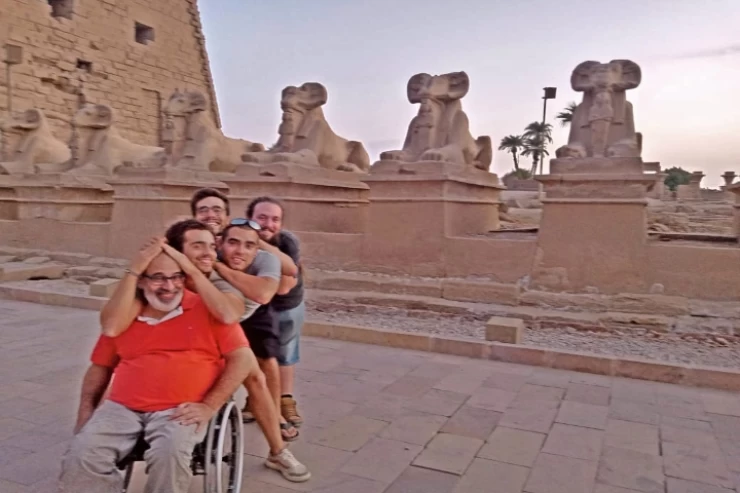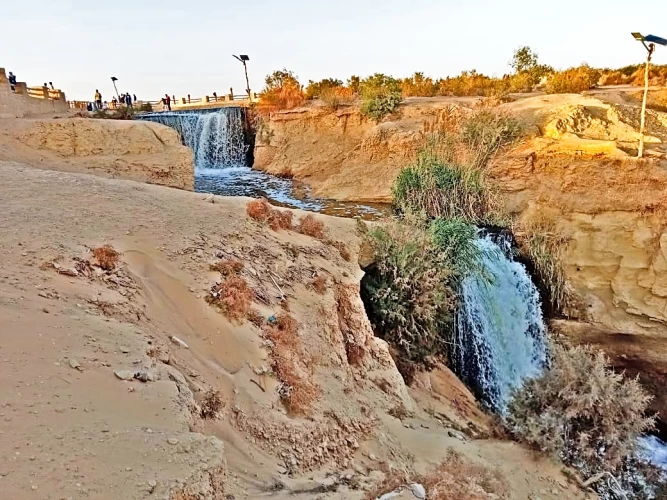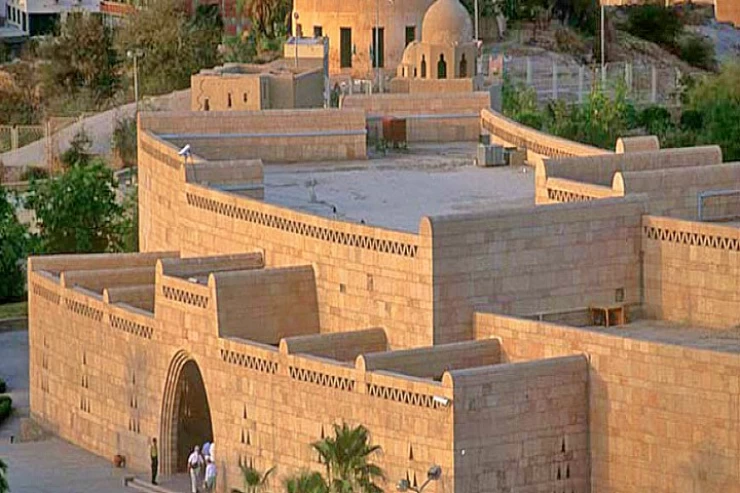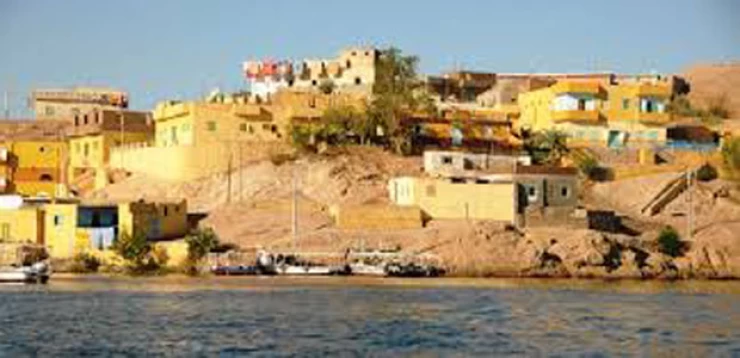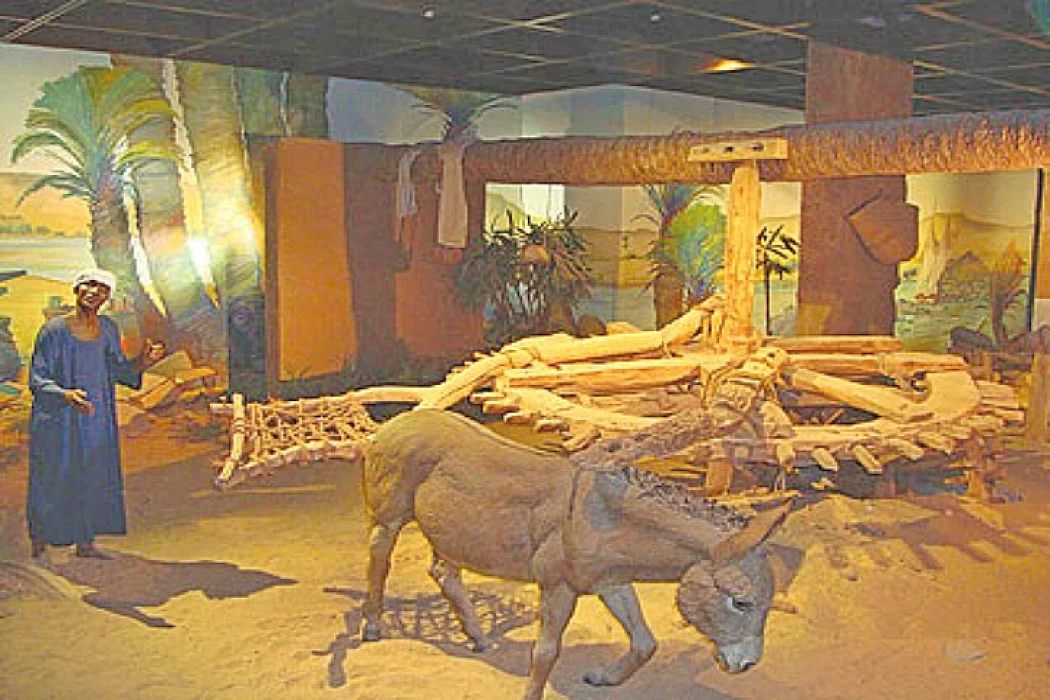
A Núbia Antiga | A História do Reino Núbio
Núbia (árabe Nuba) Região do nordeste da África, localizada entre o Egito e o Sudão, atravessada longitudinalmente pelo Nilo, limitada ao norte pelas eclusas de Assuã, a leste pelo Mar Vermelho, ao sul pela confluência do Nilo Azul e do Nilo Branco e a oeste pelo deserto da Líbia. Somente na vizinhança imediata do Nilo, interrompida por seis eclusas, há uma faixa de terra arável atravessada por ferrovias; aqui estão os principais centros: o berbere, o centro das caravanas para o Mar Vermelho, na confluência do Atbara; o antigo centro de Wadi Halfa, na fronteira do Egito com o Sudão, foi inundado após a construção da represa de Assuã.
No início da época histórica (3.500 a.C.), enquanto a civilização egípcia adquiria características cada vez mais independentes, um subneolítico tardio (as chamadas culturas dos "Grupos A e B") continuava na Núbia, que, no final do Reino Antigo (2.250 a.C.), evoluiu para uma produção de cerâmica autônoma e rica (a chamada cultura do "Grupo C", que formaria o pano de fundo inicial de todas as sobreposições da cultura do Reino Médio e do Reino Novo do Egito).
O Reino Antigo estava interessado apenas em explorar as minas de ouro das terras núbias; no Reino Médio, as expedições militares empreendidas para proteger as fronteiras do sul do país e as rotas comerciais levaram à construção de uma série de fortalezas egípcias ao longo do rio até Semnakh, ao sul da segunda catarata, sem um processo de fusão com a população indígena.
Nubia (Arabic Nuba) A region of northeastern Africa, located between Egypt and Sudan, crossed longitudinally by the Nile, bounded on the north by the Aswan Locks, on the east by the Red Sea, on the south by the confluence of the Blue Nile and the White Nile, and on the west by the Libyan Desert. Only in the immediate vicinity of the Nile, interrupted by six locks, is a strip of arable land crossed by railroads; here are the principal centers: the Berber, the center of caravans to the Red Sea, at the confluence of the Atbara; the old center of Wadi Halfa, on the border of Egypt and Sudan, was inundated after the construction of the Aswan Dam.
At the beginning of the historical epoch (3500 B.C.), while Egyptian civilization was acquiring more and more independent features, a delayed sub-Neolithic (the so-called "Group A and B" cultures) continued in Nubia, which at the end of the Old Kingdom (2250 B.C.) developed into an autonomous and rich ceramic production (the so-called "Group C" culture, which would form the initial background of all overlaps of Egyptian Middle Kingdom and New Kingdom culture).
The Old Kingdom was interested only in exploiting the gold mines of the Nubian land; in the Middle Kingdom, military expeditions undertaken to protect the country's southern borders and trade routes led to the construction of a series of Egyptian fortresses along the river as far as Semnakh, south of the second cataract, without a process of amalgamation with the indigenous population or forms of expansion. Under the New Kingdom, under Thutmose I (1504-1492 BCE) in the
Nubian culture does not reflect the connotations and beliefs of its people. Tattoos are considered cultural symbols of Nubia for both men and women, as are murals, beadwork, and palm-frond and wickerwork, which attract tourists, especially foreigners.
The decorative elements, according to the State Information Service, carry specific connotations. The sword symbolizes heroism and courage, while the crescent and star symbolize optimism. The crow and owl are also symbols of bad luck and destruction.
It is called the Land of Gold. The name Nubia is derived from the word (Nub), which means gold in ancient Egyptian. It was also famous for the gold mines that were called Nubaria. In the dictionary, we find that the word Nub means: a generation of people living in a country named after them and located in the southern part of Egypt.
In another sense, the name is attributed to Nabata, the son of the Prophet Ishmael, peace be upon him, and since their rule of the Nile Valley and Africa, they mixed with the local tribes. Over time, many of the African tribes that were under the rule of the Nabataeans took the same title. It is now noticeable that there are dozens of tribes of different races under the same title, with different tongues, and the same title remained, which is the Nubians (Nuba).
It is a Nilo-Saharan language of the Eastern Sudanic branch in southern Egypt and northern Sudan. Most of its speakers lived in the Nile Valley, in what became Lake Nasser after the construction of the High Dam south of Aswan. Its speakers number approximately one million.
Between the eighth and fifteenth centuries AD, Nubians wrote their language in the Coptic alphabet with a few additional letters. However, today, they rarely write it, and those who write Nubian use Arabic or Latin script.







